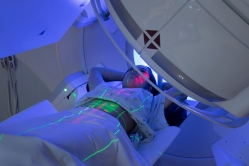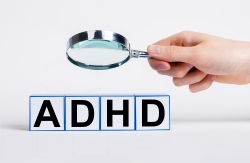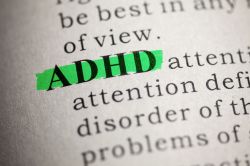
Written by Francesca Hearn-Yeates, PhD Student at the Centre for Reproductive Health, University of Edinburgh, and Dr Sinead Rhodes, Senior Research Fellow at the Centre for Clinical Brain Sciences, University of Edinburgh.
Polycystic ovary syndrome, known as PCOS, is a highly common condition, yet one that we still know relatively little about. PCOS is a condition associated with abnormal hormone levels, leading to symptoms including irregular periods, excessive hair growth, acne, and weight gain. It is estimated to affect around 1 in 10 women (or those assigned female at birth) in the UK.
A recent study into PCOS has been discussed in the media looking at the association between a diagnosis of PCOS and risk of suicide. The Guardian and The Daily Mail have both published articles about the study.
The first issue here is that a common (understandable) misconception of PCOS, that it is diagnosed by cysts on the ovaries (a trap that The Guardian fell into). Although women with PCOS can have cysts on their ovaries, so can lots of other women, and these cysts are not necessarily an issue, many of us carry on never knowing we have them. In fact, the ‘cysts’ they identified in the ovaries of women when they named it ‘polycystic ovary syndrome’ are not cysts at all! More recent research has identified that they are in fact ‘paused’ follicles (pre-egg cells).
Now, I know you are thinking, what on earth do you mean by ‘paused follicles’ but let me explain. Usually, during the menstrual cycle, various hormones fluctuate, and these fluctuations cause the follicles in the ovaries to mature into egg cells. Once they have matured, the hormones in the next stage of the menstrual cycle will prompt them to move down the Fallopian tube and into the uterus. However, in people with PCOS their hormones do not always behave as they should, meaning they do not always go through a full hormone/menstrual cycle. Their hormones can cause the follicles in the ovaries to grow but they never get the hormonal trigger to send them off down the Fallopian tube. As a result, they get a build-up of ‘paused’ follicles in the ovaries, which under the microscope can look a bit like cysts!
So, onto the media coverage of the studies. Both The Guardian and The Daily Mail articles did a good job of picking out the key results from the study into the association between PCOS and suicide risk and mentioning the methodology used. However, The Guardian incorrectly stated that data was used from ‘8,960 women and girls’, rather than 18,960, which could downplay how much impact this study could have. The Daily Mail states that ‘a third of infertility cases are linked to PCOS’ without any reference to where they sourced this data. Not referencing where they have sourced this information means we do not know if it is a valid statement. Additionally, this could lead PCOS patients reading the article to worry about their fertility, without providing any supporting evidence or websites for further information.
A key aspect of this study is that it is looking at population data, taking the population who have been diagnosed with PCOS and comparing their suicide risk to the rest of the population. Therefore, it cannot be stated whether this is a cause-and-effect relationship, or simply a correlation. A correlation would mean that although there is an association between PCOS and suicide risk, there could be a third factor (or many other things, such as lifestyle or environmental factors) that are influencing both PCOS and suicide risk, rather than the two having a direct impact on each other. These limitations are touched upon in The Guardian article, but no potential cautions are mentioned by The Daily Mail.
Both articles were successful in conveying the primary take-home messages from the study. The Guardian finished by highlighting the importance for further research into PCOS and with links to helplines for those struggling with mental health. This is a really important part of an article on such a sensitive topic.

Over the past few months there have been reports by the BBC, Guardian, and Sky News, covering a potential “breakthrough” treatment for cervical cancer, which is based on chemotherapy drug treatments that already exist.
In the UK, immunisation programmes against the human papilloma virus (HPV) infection, are used as a public health measure to lower the number of cervical cancer cases arising from HPV infections. Smear test campaigns in women aged 25-64 years are used to diagnose early changes in the cervix.
Cervical cancer – the fourth leading cancer impacting women worldwide – was diagnosed in up to 604,000 women in 2020, with relapse occurring in 2/3 women after receiving radiotherapy as the standard treatment. These statistics highlight a real need for new safe and effective treatments for cervical cancer.
Research funded by Cancer Research UK (CRUK) at multiple NHS hospitals has attempted to discover new treatment combinations for treating patients with cervical cancer. The researchers focused on using chemotherapy medication before starting patients on radiotherapy. The goal of this research was to prevent the spread of cervical cancer and improve patient survival.
What did the study involve?
The clinical trial investigated two chemotherapy treatments, cisplatin and carboplatin, that are currently prescribed for other cancers. The team divided patients into two groups with an equal number of patients receiving either cisplatin or carboplatin treatment before radiotherapy (250 women). There was also a second group of patients receiving the current standard treatment of radiotherapy only (250 women).
What did the researchers conclude?
One of the key findings from this clinical study was that patient survival without developing further cancer, increased from 64% in patients receiving the current standard radiotherapy treatment to 73% in patients treated with chemotherapy before their radiotherapy, representing better outcomes. After five years, 80% of the patients treated with the combined chemotherapy and radiotherapy survived, compared to 72% of those who received radiotherapy only. The conclusions from this research were that all patients should be prescribed both chemotherapy and radiotherapy for the treatment of cervical cancer. Another positive aspect of this study was that the chemotherapies tested are available and accessible in developing countries, making these findings globally relevant to all nations.
How did the media cover this study?
Since its publication, at the time of writing, the BBC, Guardian, and Sky News are the main outlets reporting the findings from this clinical investigation. The headlines summarised the key finding from the study, highlighting the potential for these chemotherapies to improve outcomes in patients with cervical cancer. The BBC coverage of this study under the heading “Biggest cervical cancer drug advance in 20 years hailed”, provided a balanced overview of the study based on the presented statistics from the clinical trial.
Media coverage of this clinical trial through all media channels was well-balanced and included quotes from the clinical researchers involved in the study. These quotes were generally in agreement that the conclusions from the study seemed reasonable. The Guardian quoted the lead investigator from University College London (Dr Mary McCormack) in their coverage, hailing the findings in the trial as the biggest improvement in over 20 years. The BBC coverage of this trial quoted the executive director of research and innovation at Cancer Research UK (Dr Iain Foulkes) who highlighted the importance of administering chemotherapy and its timing, to improve patient outcomes.
A limitation of the BBC, Sky News and Guardian coverage of this study was that while they reported the type of side effects experienced by patients, they did not communicate the percentage of patients experiencing side effects from the new combined chemotherapy and radiotherapy treatment. In the original study, up to 59% of patients being treated experienced serious side effects from the treatment. Another limitation of the media coverage by all reports, was that their conclusions were very broad and suggested these findings applied to all cervical cancers, whereas cervical cancer has many different stages. However, they did imply this by mentioning that not all patients receiving the new treatment would necessarily respond to this ground-breaking finding.
Conclusions
Overall, media coverage of this publication was carried out in an objective manner and with a good balance of interpreting the science and presenting quotes from researchers and cancer organisations. In terms of the publication, the clinical study reported is one of the largest studies of its type, meaning that the findings from this trial are applicable to a large number of patients with cervical cancer. Women’s health, and specifically cervical cancer remains under-researched, so findings from this research will be useful in paving the path for future work investigating new treatment options for gynaecological cancers.

Three different treatments for Alzheimer dementia (dementia caused by Alzheimer disease) have recently – or may soon – hit the market: Aducanumab, Lecanemab, and Donanemab. This has led to an excited media frenzy with much talk of ‘historic moments’ and ‘breakthroughs’.
These include:
- A quote from the Daily Mail – “’Historic moment’ in race to beat Alzheimer’s: Experimental brain plaque-busting drug ‘significantly slows decline of patients battling early stages of the disease’” (28/09/2022)
- The Guardian said – “Success of experimental Alzheimer’s drug hailed as ‘historic moment’” (29/09/2022)
- Another Daily Mail article – “Experimental Alzheimer’s drug made by Elli Lily slows cognitive decline by 35% and FDA will look to approve it this summer” (03/05/2023)
- And the Daily Mail again – “Is this the ‘beginning of the end’ of Alzheimer’s suffering? Breakthrough drug signals ‘treatment era’ for memory-robbing disease… but experts warn the NHS is ‘not ready’ to dish it out” (04/05/2023)
In many ways this excitement is understandable, as dementia – of which Alzheimer disease is the most common cause – is increasingly common, yet many people have the view that little can be done about it. Being a complicated topic means details are often missed out in the media reports, but I will do my best to address these here. The accuracy of these media reports is not helped by the fact that all of the headlines above are based just on the drug companies’ own press releases; the full research data were not made public until December 2022 for Lecanemab and July 2023 for Donanemab.
There is more treatment, care, and support that can be given to someone with dementia than many people think and the NHS, social care, and dementia charities are active in doing this. However, the question raised by these headlines is are these new drugs all they have been cracked up to be?
The truth behind the new dementia drugs
Aducanumab was controversially approved very quickly in America – the clinical trials finished early since they were not looking highly successful – leading to several people resigning in protest. Nevertheless, people in the US now get Aducanumab for dementia, as well as some people in the UK receiving it as part of clinical trials.
Similar events occurred for the US approval of Lecanemab even though, again, the results were not overwhelmingly positive. Lecanemab had been shown to clear the amyloid plaques in the brain that are characteristic of Alzheimer disease – an impressive feat – but unfortunately the actual difference it made was small and there were potentially serious side effects – plus, there was less evidence that the drug worked in women*; to my knowledge, this last point has never been reported in the media. This gives me the impression that, despite the effects of the drug on the brain, it did little or nothing positive to the person.
Finally, a similar process has followed the findings about Donanemab. Major headlines preceded the presentation of the full results (see above), as has been the case for all these drugs. This drug seemed to work in both men and women, but again only made a small difference to the person and had similar serious side effects.
How the findings are presented can make them look more impressive
In addition to the media often relying on research that has not yet been evaluated for their stories, the data they present are often relative effects, meaning the findings are described ‘in comparison to’ something else. For example, one press release said “Donanemab treatment slowed clinical decline by 35% compared to placebo”†, with another stating “Lecanemab treatment met the primary endpoint and reduced clinical decline … compared with placebo at 18 months by 27%”‡ (I have bolded some text for emphasis).
However, when you look at the actual difference between the two groups the results are less impressive. In clinical trials, the people taking a high dose of Aducanumab and the people taking a placebo (basically a sugar pill) BOTH got worse over time, but those on the drug were not quite so bad (less than half a point on an 18-point scale). There was even less difference between those on a low dose and a placebo. The differences for Lecanemab and Donanemab were similarly small, meaning all three drugs are no better than our current treatments, and by some measures only about half as effective.
Importantly, none of these drugs are good enough at treating Alzheimer dementia that another person would be able to detect a change in the person over time compared to someone not taking the drug.
Negative side effects
However, in addition to being no more effective than the current treatments, these new drugs are associated with substantial risks. The main significant side effects are swelling of and bleeding in the brain, both of which occurred in a large minority of participants receiving the drugs (13-31%) and in very few people taking a placebo (<10%).
Conclusion
In the UK, Lecanemab and Donanemab will separately have to be approved before being available to people with dementia. It remains to be seen whether these drugs will be licensed and made available on the NHS, but it seems unlikely that struggling NHS services – mine included – would be able to incorporate them into their current treatment pathways. Given the drugs’ limited effectiveness, huge costs for the drug alone as well as the requirement for multiple expensive scans, and the risk of potentially serious side effects, the question every doctor will have to ask themselves is “would I recommend a relative to take this treatment?”
Helpful links:
Alzheimer Scotland (24 hour Freephone Dementia Helpline 0808 808 3000)
Alzheimer’s Society (Dementia Support Line 0333 150 3456)
Scottish Dementia Research Consortium
The following provide some additional details on the sources of information included in the post above:
* See Figure S4 panel B on page 24 of the Supplementary Appendix to van Dyck et al. (2023).
† Lilly’s Donanemab Significantly Slowed Cognitive and Functional Decline in Phase 3 Study of Early Alzheimer’s Disease. [Press Release, 03/05/2023] The full sentence reads “Donanemab treatment slowed clinical decline by 35% compared to placebo, and resulted in 40% less decline on the ability to perform activities of daily living.”
‡ LECANEMAB CONFIRMATORY PHASE 3 CLARITY AD STUDY MET PRIMARY ENDPOINT, SHOWING HIGHLY STATISTICALLY SIGNIFICANT REDUCTION OF CLINICAL DECLINE IN LARGE GLOBAL CLINICAL STUDY OF 1,795 PARTICIPANTS WITH EARLY ALZHEIMER’S DISEASE. [Press Release, 27/09/2022] The full sentence reads “Lecanemab treatment met the primary endpoint and reduced clinical decline on the global cognitive and functional scale, CDR-SB, compared with placebo at 18 months by 27%, which represents a treatment difference in the score change of -0.45 (p=0.00005) in the analysis of Intent-to-treat (ITT) population.” On this occasion, the press release does also report the absolute change (-0.45 points) but does not state the scale (0-18).

Artificial intelligence (AI) has rarely been out of the headlines in the last couple of years, and particularly since the OpenAI organisation released its ChatGPT service to the public for testing in 2022. Thousands of articles have been written since, ranging from claims of revolutionary change to apocalyptic warnings (most recently culminating in the UK-hosted November 2023 AI Safety Summit). But what actually is “AI”, and how much of this commentary is realistic?
The idea of AI, and some of its core technology, has actually been around since the 1950s, when computing was very young, and versions of it have been around for a long time in relatively basic forms — for example, Microsoft’s “paperclip” Office assistant, or the predictive text feature on your phone. Scientific data analysis has also used AI concepts such as “neural networks” for several decades. These AI systems all have the common feature that they are driven by statistical analysis of data, e.g. your Word document or text message, coupled with some response to recognition of patterns in that data. AI systems have to be trained in this pattern-recognition by exposure to a large volume of example data, so they know which responses are most likely: this training is why in scientific applications AIs are more often known as “machine learning” (ML) tools. The reason we are hearing so much about AI now is a combination of advances in computing power (in particular, hardware for 3D computer games turned out to be ideal for ML training), new ideas for how to implement ML systems, and the explosion of training data from the internet.
These advances have made possible the building of unprecedentedly large-scale “generative” AI systems, trained on vast quantities of data and capable of interacting in a way convincingly similar to human beings. But at their core they are still essentially predictive text (and other media), just an extremely advanced sort. Generative AIs create mash-ups of their input data and, however impressive the results, there is no true reasoning going on. For example, early versions of ChatGPT were notoriously incapable of basic arithmetic if phrased in unfamiliar ways. Updates have added work-arounds to known pitfalls and appear more convincing, but their core is still just based on statistical remixing of the training date. They are therefore not good at innovation, but can be excellent at producing summaries or re-workings of existing formats, such as literature reviews, formulaic reports, forms, translations, and some computer codes. This frames the potential for AI technology to disrupt and potentially damage us: as is often the case with advances in automation there is real potential for generative AI to accelerate or replace repetitive human tasks and jobs, but there is little scope for a “rise of the machines” Terminator-style AI revolt. There have been several push-backs to drives for generative AI use from creative sectors, e.g. the Hollywood writers’ strike, artists whose work has been (usually without permission) used as training input data to image-generating AIs, and journalism.
The most high-profile warning of AI risks came in the form of a “Pause Giant AI Experiments” open letter from the Future of Life Institute in March 2023, famously signed by Elon Musk among thousands of others. However, this and OpenAI’s calls for risk-management of the current state-of-the-art systems — which it (and now the the UK government) calls “frontier AI” — notably shy away from placing regulatory restrictions on industry, and may be driven as much by pre-empting regulation or buying catch-up time as by genuine concern about sentient AI dangers. More immediate risks of generative AI are in public misinformation, through AI-driven social media posting, “deep fake” videos and audio putting words in the mouths of public figures, and poor data inputs or reviewing processes for AI-generated news articles. AI has also become a ubiquitous advertising buzzword: adding an ML component to an app or appliance is very easy and enables claims to be “AI powered”, without necessarily adding any value for users.
This is a rapidly evolving area and we can certainly expect to see social and technical changes driven by AI in the coming years, but — as always — don’t believe everything you read, either human- or AI-generated.

Written by Dr. Josie Fullerton, Postdoctoral Research Associate at the Institute of Cardiovascular & Medical Sciences, University of Glasgow.
For many, coffee is an essential part of their daily routine. We get up, put the kettle on, and have a cup of strong coffee before starting our working day. Unsurprisingly, coffee is one of the most widely consumed drinks across the globe. But is coffee good or bad for you?
Previous research has shown that coffee may have a combined positive and negative effect on our health. For example, coffee can slow disease progression in the liver, such as fibrosis. Yet, for those who suffer with anxiety, coffee can increase the likelihood of panic attacks.
Although caffeine is the most widely recognised ingredient of coffee, it only contributes to 2-3% of the total ingredients of coffee. We should be mindful that coffee contains other compounds such as sugars and carbohydrates, and we are discussing the combined effects of these when discussing the health impact of coffee.
The Research
Scientists at the University of Southampton led by Dr Robin Poole, have looked at the evidence for associations between coffee and various health outcomes. They reviewed all available evidence to determine the current understanding of the effect of coffee on our health – this is called an ‘umbrella review’.
The Results
This review of 201 papers reported that coffee consumption appears to reduce the incidence of cancer (specifically liver, prostate and endometrial), skin cancers (melanoma and non-melanoma), as well as type 2 diabetes, depression, and metabolic syndromes. Furthermore, the incidence of neurodegenerative diseases, such as Alzheimer’s disease and Parkinson’s disease, appeared to be reduced. As with previous reports, the review reported clear reduced incidence of liver conditions, as fibrosis, cirrhosis, and liver cancers. This may be due to the presence of antioxidants in caffeine. It should be noted the health benefits do not increase with increased intake of coffee – in other words, the health benefits level off after 3-4 cups of coffee a day.
Although not all the outcomes of coffee were positive. The research showed that in pregnant women, coffee is associated with premature labour, miscarriage, low birth weight, and the increased risk of childhood leukaemia. Previous studies have shown that the action of caffeine is doubled in pregnancy, therefore the effect per cup is much higher in pregnant women. Furthermore, caffeine can easily cross the placenta where it will reach the baby, which may account for these damaging health effects.
Media coverage
We have previously reported on media coverage of research around coffee consumption. Not surprisingly this review was picked up by the media, as coffee consumption spans the globe. The Guardian reported on ‘The truth about caffeine: how coffee really effects our bodies’, stating that over 2 billion cups of coffee is consumed per day. Encouragingly, this article discusses the action of coffee, how quickly it can act, but also the action of caffeine on the bodies central nervous system and its links with anxiety. When discussing Dr Poole’s work, The Guardian quotes the published literature that the intake of coffee is generally positive for our health.
The Guardian article does not discuss the findings relating to pregnancy – only quoting that the NHS has an upper caffeine limit for pregnant women, stated on the NHS webpage as 200mg/day (approximately two mugs of coffee). This point was probably left out on purpose as the impact of coffee in pregnancy requires further research – however, it currently leans towards having the potentially for harmful effects.
Take-home message
Overall, this paper and the media coverage states that the consumption of coffee is more often associated with positive health effects, with the largest reduction in risk for those who have 3-4 cups of coffee a day. However, as always, more research is required, but I’ll not be putting my coffee cup down any time soon.

Written by Dr Sinead Rhodes and Ailbhe McKinney
As could have been predicted, the BBC Panorama programme shown on Monday night about adult ADHD diagnoses has led to a series of other media reports questioning the validity of ADHD. In a blog post on Tuesday I expressed concern about the impact of this programme and now we are seeing it escalating out of control. One headline out today asks ‘does ADHD even exist’. The article goes on to continue a lot of old myths about ADHD and is littered with inaccuracies like ADHD is caused by bad parenting – it definitely is not.
Inaccuracy number 1:
Some of course relate to medication. They refer to children ‘being dosed with drugs that pacify them, and their real problems are ignored’. Let us look at the research. Pacify? No – self-regulation. There have been numerous media reports over the years referring to ADHD related medication acting by slowing down the child or adult – this obviously does not sound like something you want for your child – but let’s see what the research says.
Actually, we know from research that stimulant medication slows down performance when a task is difficult and speeds up performance when a task requires quick responding. The medication acts to help the child or adult self-regulate. For many of these children and adults, medication acts as a gateway to being able to engage with psychological supports and programme.
Inaccuracy number 2:
The article repeatedly refers to there being ‘no independent valid test for ADHD’. ADHD is a thinking and behaviour condition and so the only way to diagnosis it is for a clinician to assess the person’s history of thinking and behaviour. This isn’t as clear cut as a blood test you take for diabetes or an X-ray for a broken bone but that doesn’t mean it isn’t accurate.
ADHD is always the scapegoat, even though autism, dyspraxia, depression, OCD, anorexia, and post traumatic stress disorder, for example, are all diagnosed in the same way; by an assessment performed by a clinician where the clinician’s judgement plays a bigger role than with a blood test or x-ray. Even saying this, it is important to point out, there are standardised assessments used for ADHD where the same questions are asked and cut off scores indicate an ADHD diagnosis.
Media coverage in recent years…It was getting better…..
At Research the Headlines we have continually reported over the last ten years about recurring topics in the media. Common examples are how much caffeine is bad for you, how much exercise do you need for good health. ADHD is up there amongst the most commonly recurring. Below are some examples of our previous posts! What is really disappointing is that you will see in a post we published almost a year ago we were getting hopeful that things were changing and reporting was becoming more accurate and less sensationalist.
Unfortunately, it looks like we are entering a sea of the worst reporting ever on the topic. Here are some reminders of our previous discussion of this topic. These include adult ADHD, diagnosis of ADHD, brain differences and ADHD, parenting and ADHD, medication and ADHD, circumcision and ADHD, environmental factors in pregnancy and ADHD, steroid use in premature babies and ADHD, video use in ADHD, reports about diagnoses of famous people and ADHD, including Richard Bacon, will.i.am, and Rory Bremner.
We need to keep going forward with our understanding of ADHD – not a monumental leap backward to inaccurate sensationalist reporting that has a huge risk of causing serious harm.

The BBC Panorama show ran a programme last night about private ADHD diagnosis. Numerous people have provided excellent overviews of the many reporting issues with this programme – see for example @ADHD Foundation and @garwboy on Twitter.
As an ADHD researcher who specifically recruits participants for research who are on waiting lists to better understand and support their needs, I have considerable concerns about the impact of this programme. We know that NHS waiting lists for ADHD and similar neurodevelopmental difficulties such as autism are long and they are getting longer. Some people are waiting up to 4 years for assessment on the NHS. Research shows many of those awaiting diagnosis have thinking, learning and mental health difficulties. No wonder there is now a growing market for private assessment.
This was such a missed opportunity to highlight good – as well as – questionable diagnostic services. Instead, there was a narrative of an NHS Gold Standard service pitched against several private clinics whose services were all critiqued. The NHS waiting lists are 3 years in many areas and even longer in some parts of the UK. How did the reporter get access to that place? It seems they were offered a place without waiting that others do not have the luxury of getting. It looks like he got an assessment place because it was known he was in a reporting role but this was not disclosed to the private clinics.
All of the stories of those who accessed private services on the programme were negative. You only have to take a quick look at Twitter today and you will hear the voices of many parents of children and adults who have accessed private services and how they are very content with the services they received. Many reporting the services they accessed were much more thorough than those portrayed on the programme and involved developmental histories for example. For these people the diagnosis is often liberating enabling them to finally put the pieces of a jigsaw together and understand themselves. Or understand their child in the case of a parent and help the child to understand themselves in a world that is set up for those who are neurotypical. Research shows that children and adults understanding their strengths and difficulties associated with an ADHD or related diagnoses is really important for successful outcomes.
The focus of the programme was almost exclusively on ADHD diagnosis being a pathway to receiving stimulant medication. This went along with a narrative of why diagnoses were high in these clinics – the person diagnosed would then go on to pay for a monthly prescription. Diagnosis is far more than about accessing medication. Receiving a diagnosis is really important for identity. For many diagnosis is a pathway to becoming part of the ‘ADHD community’ (or other neurodivergent community) and getting the understanding and support they need to thrive.
This was an opportunity to highlight any difficulties found in particular private practices and point to examples of good practice such as taking a full and thorough developmental history and corroborative information. We do not know at this point the proportion of inaccurate / unreliable diagnoses coming out of clinics in the UK and this is important to ascertain. In the meantime NHS waiting lists are getting longer and longer and the private sector are helping to cover what the NHS does not have capacity for. That context was really missing.
The programme ended with a statement of the scandal of these private services. The real scandal is that the NHS lists are so long people have no choice but to access services privately. Now they will likely be faced with questioning of whether their diagnosis is valid. This is a really harmful situation to be in – not just in relation to medication but the bigger picture of the diagnosis helping with personal understanding and identity.
From Hype to Reality: Separating Fact from Fiction in Media Coverage of ChatGPT and Higher Education
Written by Dr Sam Illingworth, Associate Professor in the Department for Learning and Teaching Enhancement at Edinburgh Napier University.

In recent weeks, there has been a lot of media attention around ChatGPT, a large language model created by OpenAI (an artificial intelligence company), and its potential applications in higher education. ChatGPT is a chatbot which can understand and generate text. It can be used to write news summaries, product descriptions, stories, essays, or emails, for example. However, the way in which this has been discussed and portrayed in the media has varied widely, ranging from accurate and informative to sensationalistic and misleading.
One common theme in media coverage of ChatGPT and higher education is the potential for the model to revolutionize the way we learn and teach. Some articles suggest that ChatGPT could replace traditional lectures and textbooks with personalised, interactive learning experiences that adapt to each student’s individual needs and interests. While there is certainly potential for ChatGPT to be used in this way, it is important to note that the technology is still in its early stages and there are many challenges that must be overcome before it can be widely adopted in higher education.
Another common theme in media coverage of ChatGPT and higher education is the potential for the model to perpetuate existing biases and inequalities in education. As others and I have warned, ChatGPT, like any technology, is only as unbiased as the data it is trained on, and that if the data contains biases or inequalities, these will be reflected in the model’s outputs. This is an important consideration and underscores the need for careful attention to be paid to the data used to train ChatGPT and other such tools in higher education and beyond.
However, not all media coverage of ChatGPT and higher education is accurate or informative. Some articles focus on sensationalistic headlines or clickbait, rather than providing a balanced and nuanced view of the research. For example, some articles have suggested that ChatGPT could eventually replace human teachers entirely, leading to mass unemployment in the education sector. While it is true that ChatGPT has the potential to automate some aspects of teaching and learning, it is unlikely to completely replace human teachers in the foreseeable future.
Similarly, some articles have suggested that ChatGPT could be used to cheat on exams or assignments, allowing students to pass without learning the material. While it is possible that some students may try to use ChatGPT in this way, it is important to note that using AI models to cheat would likely be detected by plagiarism detection software or human instructors. Likewise, in many instances some of these headlines are assuming that all students will use the technology to cheat, rather than either trusting our students or actually asking them about how they might use it to enhance their studies.
To sum up, the media portrayal of ChatGPT and higher education can differ greatly, ranging from factual and educational to exaggerated and deceptive. While there is certainly potential for ChatGPT to be used in innovative and beneficial ways in higher education, it is important to approach the technology with a critical eye and to carefully consider its potential limitations and drawbacks. By doing so, we can ensure that ChatGPT and other AI models are used to enhance, rather than replace, human teaching and learning in higher education.
—
You can find out more about Sam’s work and research by visiting his website www.samillingworth.com and connect with him on Twitter @samillingworth or email s.illingworth@napier.ac.uk.

Written by Dr. William Johnston, Postdoctoral researcher, Glasgow Caledonian University and Dr. Mark Thomas Shaw Williams, Lecturer in Cell and Molecular Biology, Glasgow Caledonian University.
Respiratory tract infections are infections of parts of the body involved in breathing, such as the sinuses, throat, airways, or lungs. Some examples are the common cold, tonsillitis, and laryngitis.
Respiratory tract infections are of growing concern due to rising death rates and limited treatment options. This occurs as many bacteria responsible for these infections are resistant to current antibiotics, and a large proportion of cases are caused by biofilms.
Biofilms arise when bacteria clump together in a ‘slime-like’ substance making them difficult to be targeted by antibiotics. This is especially common in patients on ventilation in intensive care units (ICU).

One bacteria like this which makes biofilms is P. aeruginosa, related to pneumonia and severe infections in cystic fibrosis. Previous attempts to treat P. aeruginosa biofilms using antibiotics have been largely unsuccessful, leaving few treatment options available for patients who already have a weakened immune system.
A recent research study carried out by Mazzolini and colleagues focussed on using another bacteria called M. pneumoniae to fight P. aeruginosa biofilms. The researchers selected M. pneumoniae because it is responsive to antibiotics and easy to genetically modify.
What did the research find?
In their research published in Nature Biotechnology, the authors successfully reprogram M. pneumoniae giving it the ability to breakdown and kill P. aeruginosa biofilms without M. pneumoniae causing infection itself. This was completed through two steps;
Step 1: They removed genes in M. pneumoniae capable of causing disease, creating a weakened strain suitable for use.
Step 2: They added new genes to this M. pneumoniae strain making it capable of dissolving P. aeruginosa biofilms and then killing it once the biofilm was broken down.
How was this research covered in the media?
This research was featured in an article from The Guardian titled “GM bacteria could combat antibiotic resistance, study suggests”. The article provides a good summary of the research and is well explained with input from the senior author of the study. However, the article headline is slightly misleading because the reprogrammed M. pneumoniae cannot make bacteria that are resistant to antibiotics responsive to them again. The reprogrammed M. pneumoniae provides an alternative treatment option for P. aeruginosa biofilms, but does not make existing antibiotic resistant bacteria any more responsive to antibiotics.
What will happen with this research in the future?
Taken together, this research provides firm evidence that using a genetically reprogrammed bacteria to treat P. aeruginosa biofilms may be an effective option for respiratory tract infections. However, it is worth stating that this research was performed largely in mice, and whilst the data seem promising, a major challenge will be the transition into human infections, which can take more than ten years to get from discovery to market.

Written by Sophie Hoetzel, public engagement masters student, University of Edinburgh and Dr Esther Papies, School of Psychology and Neuroscience, University of Glasgow.
New diet plans and information about how to lose weight seem to appear weekly. However, there is no ‘one size fits all’ advice. Nutrition is complex; numerous factors like our genes, physiology, psychology, and lifestyle affect our food habits and how food affects our health. Nevertheless, or potentially because of this, there seems to be a desperate need for an easy solution. The media frequently reports about new pieces of nutritional research, and the different ways media outlets write about them can be confusing and contradicting.
A study recently published by Leonie Ruddick-Collins and colleagues in Cell Metabolism looked at the impact of eating times on weight loss in otherwise healthy obese people. More specifically, the aim was to see if consuming most calories (45%) for breakfast would lead to a greater weight loss compared to eating most calories at dinner (morning-loaded vs evening-loaded). They found that the timing did not affect the participants’ metabolism or the number of calories burned throughout the day. No significant weight loss difference was evident between the big breakfast group and big dinner group. However, the timing did affect certain hormones, including the ‘hunger hormone’ ghrelin. The big breakfast group had lower ghrelin levels and felt lower appetite (i.e. less hungry) during the day compared to the big dinner group. As participants only ate the food provided by the researchers, neither of the groups snacked, whilst in the ‘real world’, more appetite could have led to more snacking.
How did the media cover this research?
The Daily Mail titled their article: ‘Why eating ‘breakfast like a king’ might not help you lose weight: Age-old diet advice to consume bulk of calories in morning does not help you burn more calories, study finds’. It suggests the time of calorie consumption is not linked to weight loss in anyway, whilst the title of an article by The Sun claims the opposite: ‘GO LARGE Best time to eat the biggest meal of the day when trying to lose weight revealed by health experts’. Interestingly, both articles explained the original study and summarised its findings well. However, the ‘health experts’ The Sun referred to in their title were not the study’s researchers, but rather Dr. Mosley, a former doctor and now TV presenter. He expressed his surprise at the result as he compared it to the previous Tel Aviv University study with different results. The study was carried out in a less controlled setting with participants with raised blood sugar levels as opposed to healthy individuals. Their participants lost more weight after eating big breakfasts. However, a less controlled setting meant participants could snack during the day. Other differences included the original study being significantly shorter, but it assessed energy expenditure (calories burned) more accurately. So, differences in the results are not surprising. Nevertheless, both studies showed a decrease in appetite after a big breakfast, which can potentially help weight loss.
Finally, the BBC found a straight-forward and clear way to summarise a key finding of the study: ‘Bigger breakfasts better for controlling appetite, study suggests’. Taken together, research suggests that people could potentially lose weight by eating big breakfasts due to behavioural changes as a result of reduced appetite (e.g. less snacking). However, the new study found no association between eating times and calories burned. It is important to remember that nutrition is complex; everybody is different, and what works best for one person does not necessarily work for another.

Written by Shivane Chawla, public engagement masters student, University of Edinburgh and Dr Joanne Ingram, Senior lecturer, University of West Scotland.
The COVID-19 pandemic has widened health inequalities including those in mental health. For example, people with poor mental health tend to have physical health problems like high blood pressure, asthma, cancer, epilepsy or asthma. New research shows that people with poorer mental health are more likely to develop long COVID, adding to their already too large number of physical conditions.
What did the research find?
A recent Harvard research study, consisting mostly of women participants, looked to see if psychological distress (depression, anxiety, loneliness, stress, or worry) before a COVID infection was associated with a risk of having COVID symptoms for more than 4 weeks. This extended timeframe is referred to as “Long COVID”, where several common symptoms include extreme fatigue, shortness of breath and a loss of smell. The study followed 3193 people over a one-year period. The participants were given several self-assessment surveys, one on their baseline level of distress before contracting COVID and then at monthly and quarterly timepoints to assess the rates of COVID infection and on-going symptoms. They found that previous psychological distress, experienced before COVID infection, but during the pandemic (April to September 2020), was associated with increased risk of long COVID conditions.
How was this study covered in the media?
The Guardian article title “Study Finds Link Between Poor mental health and long COVID” title conveys the research in a way that could be misleading. Firstly, many readers would also think the link between mental health and long COVID would go the other way; that long COVID leads to mental health problems. So, those who only read the headline might have completely misunderstood the findings. Secondly, using the term “mental health” suggests that clinical conditions have been measured i.e. does a person have a diagnosis of depression or not? Whereas, people only answered basic distress questionnaire. The sub-title clarifies this point well, ‘High levels of distress before coronavirus infection raises risk of long COVID, say Harvard researchers.’
Later in the article, clearer distinction is made between what has been found versus potential interpretations. For example, the article’s authors explicitly note that “The findings do not mean that mental health issues cause long COVID: more than 40% of those who developed long COVID in the study had no signs of distress before infection.” It is that poor mental health in the early stages of the pandemic puts a person at higher risk for developing long COVID. Chronic stress can weaken the immune system and make a person vulnerable to long COVID. The Guardian places the study in the wider context by explaining this point well by noting that stress has been linked to a greater susceptibility to common colds and other respiratory tract infections.

Written by Rebecca Sharland, Science Communication and Public Engagement Masters student at the University of Edinburgh and Dr Michael Byrne, leader of the Climate Dynamics Lab at the University of St Andrews.
COP27 is taking place this week in Sharm el-Sheikh, Egypt. High on the agenda will be issues surrounding the Paris Agreement and discussions on how nations can work together to keep the global temperature rise below 1.5°C – a significant change given that the Earth has already warmed by 1.1°C and could reach 1.5°C as soon as the 2030s.
What did the study show and what are climate tipping points?
Climate tipping points occur when changes in large parts of the climate system become self-perpetuating beyond a warming threshold and result in irreversible alterations to the Earth system, for example collapsing ice sheets causing sea level rise.
A recent study in Science has re-evaluated climate tipping points (see some examples in the table below) and the global warming thresholds at which they are likely to be triggered. Some of tipping points assessed were global, affecting the overall operation of the Earth system (e.g., major ice sheet collapses or the Amazon rainforest turning to desert); while others were more regional affecting human welfare or unique features of the Earth system (e.g., coral bleaching in the Great Barrier Reef).
| Natural Earth Feature | Tipping point outcome |
| Global | |
| Greenland Ice Sheet | Collapse |
| West Antarctic Ice Sheet | Collapse |
| Labrador-Irminger Seas/SPG Convection | Collapse |
| East Antarctic Subglacial Basins | Collapse |
| Amazon Rainforest | Dieback (i.e. turn to desert) |
| Boreal Permafrost | Collapse |
| Atlantic M.O. Circulation | Collapse |
| Arctic Winter Sea Ice | Collapse |
| East Antarctic Ice Sheet | Collapse |
| Regional | |
| Low-latitude Coral Reefs | Die off |
| Boreal Permafrost | Abrupt thaw |
| Barents Sea Ice | Abrupt loss |
| Mountain Glaciers | Loss |
| Sahel and W. African Monsoon | Greening |
| Boreal Forest | Southern dieback |
| Boreal Forest | Northern expansion |

As we approach the minimum temperatures at which these tipping points may occur, the question arises about the accuracy of the estimated thresholds (based on climate modelling) and whether some of these have already been surpassed.
The paper states that we must stay on track with the Paris agreement, and push to keep global warming below the 1.5°C target as the threat of activating tipping points increases for every fraction of a degree of warming. They warn that the Earth may already have passed beyond a safe state with our current 1.1 degree celsius of warming above pre-industrial levels.

What did the media report?
The Guardian published an article titled “World on brink of five ‘disastrous’ climate tipping points, study finds” based on the above study.
Initially, the article takes a very alarmist approach. The word ‘disastrous’ is not used in the research study itself and the temperatures at which the final six tipping points could be triggered are exaggerated (the article states that they will occur anywhere above 2°C, however many of the thresholds are around 4°C with some are as high as 7.5°C).
However, the article contains interviews with members of the research team who highlight both the dangers of triggering these tipping points and their hope for prevention. Several researchers also mention uncertainty around the global warming thresholds at which these tipping points will be triggered and the urgent need for further investigation.
Disappointingly, the key message from the original research study, that we must strive to meet the terms of the Paris Agreement, is somewhat lost in this news article. It is only mentioned briefly as a quote from an interview and is not highlighted by the journalist.
What next?
It is important to raise awareness of the dangers posed by global warming; The Guardian article does this well, emphasising how disastrous passing these global tipping points would be. Nevertheless, it is also necessary to highlight the preventable nature of these changes, the amount of further research required and the substantial uncertainty involved in trying to predict if and when these tipping points will be crossed. We are at a very critical point with global warming where we must aim to minimise increases in the Earth’s temperature; if and how we are going to do this will be key questions during COP27 discussions this month.

Written by Dr Sinead Rhodes (Senior Research Fellow) and Ailbhe McKinney (PhD researcher), University of Edinburgh
The last post I wrote about the representation of ADHD in the media highlighted clear improvements with coverage of this neurodivergent condition over the last couple of decades. It is then extremely disappointing to see a new post in the media that mocks the condition. The article is so bad that I am really hoping it is withdrawn and the media source learns a stern lesson from responses like this as I am assuming people with ADHD will be highly offended by it.
We have written a lot on Research the Headlines about sensationalist or misleading headlines but this one definitely tops all of them – ‘I may not be a doctor….but I’m almost certain you have ADHD: Welcome to the new stage of your life, where everyone seems to have the same neurological condition’. Even more concerning is that the headline matches the full article. We often post about ‘Don’t stop at the headline’ as the article is usually informative with the headline acting as click bait. In this case though, the ridicule continues throughout the article. This is very disheartening to see this for what is a clinically diagnosed condition that can cause those affected significant difficulties in everyday life.
Ironically, I clicked on this post as I was waiting on some final information to press submit on a grant application I have been writing to fund a study to ensure more appropriate assessment of mental health in neurodivergent young people. To read an article that refers to ‘the ever increasing explosion in adult ADHD diagnoses’ at a time when we know that ADHD is still massively under-diagnosed is frankly alarming. ADHD is under – not over- diagnosed (at least in the UK where this article was published). Many of those who have not been diagnosed, for whatever reason, typically have significant difficulties in how they function. This often extends to their mental health. Also, the article claims receiving a ADHD diagnosis can be achieved with “stunning ease” yet, in Scotland (and the UK), waiting lists for neurodevelopment condition assessment are lengthy, typically 18 months upwards with some children waiting up to 3 years (Crane et al., 2018), see for example NHS Tayside but has been up to seven years for adults.
Children and adults who are neurodivergent, including those with ADHD, have a much higher risk of mental health difficulties than their peers. They also show these difficulties much earlier in life – often in childhood. Mocking the usefulness of a diagnosis and the process is simply appalling. We know that psychoeducation – understanding a condition you may have – is extremely important for positive outcomes. This is indeed recognised in the NICE (National Institute for Health and Care Excellence) guidelines (NICE, 2018) where understanding ADHD is recommended within the treatment plan for those with ADHD.
It is difficult to read this article and not get the impression that the author thinks this will come across as some kind of banter – the whole piece is written as if it was to be interpreted as a joke. They even refer to the outcome of their assessment as ‘plus this way I get drugs!’ We know that for many young people and adults with ADHD stimulant medication can be a lifeline – it can facilitate them to stop and think and plan and remember what they need to do in any given situation. Coupled with appropriate supports within their environment – whether they are a child at home or school or an adult in employment – it can be an extremely important component of navigating their day in what many with ADHD perceive as a ‘neurotypical world’.
I would worry about someone who recently got an ADHD diagnosis coming across this article which belittles them. They may be at a point in their life where finally things are starting to make sense and may even be building the courage to tell friends, family, and co-workers. This article will then stop them in their tracks to do so and make them feel like a joke. They might think if I tell people I have ADHD they’ll just think I am a silly “ultra-online zillennial” looking for an excuse to not to work. After beginning to realise why their life has been harder than everyone else’s, this article will invalidate the years of suffering they have endured, because, as the article says, it is ‘so commonplace’.
The most concerning part of the article was the reference to women undergoing ADHD assessment. The article refers to ‘the reassessment of who’s been chronically overlooked (read: women)’ in the context of describing the new world they think we live in of an ‘explosion of adult diagnoses’. My work has involved considerable engagement with girls and women with suspected ADHD –the non-diagnosis due to having been on a long waiting list, hiding their ADHD (called ‘masking’ or ‘camouflaging’), being overshadowed by depression, anxiety, or eating disorders or delays caused by looking a little different to males with ADHD in their behaviours. Not having a diagnosis – being misunderstood and the mental health consequences that often come with that – just because you are a woman is not a laughing matter. The consequences of not having a diagnosis when you are experiencing those difficulties can be devastating. Ailbhe McKinney, who is a PhD researcher working with me, has recently completed extensive work with female adolescents and adults with neurodivergent conditions about their priorities for research and the overwhelming response relates to wanting research to focus on masking and fitting in as these are thought to have a huge impact on mental health outcomes. Undermining the importance of diagnosis for women alongside a narrative about how easy it is to get a diagnosis is harmful and damaging to yes what quite frankly are a chronically overlooked group.

